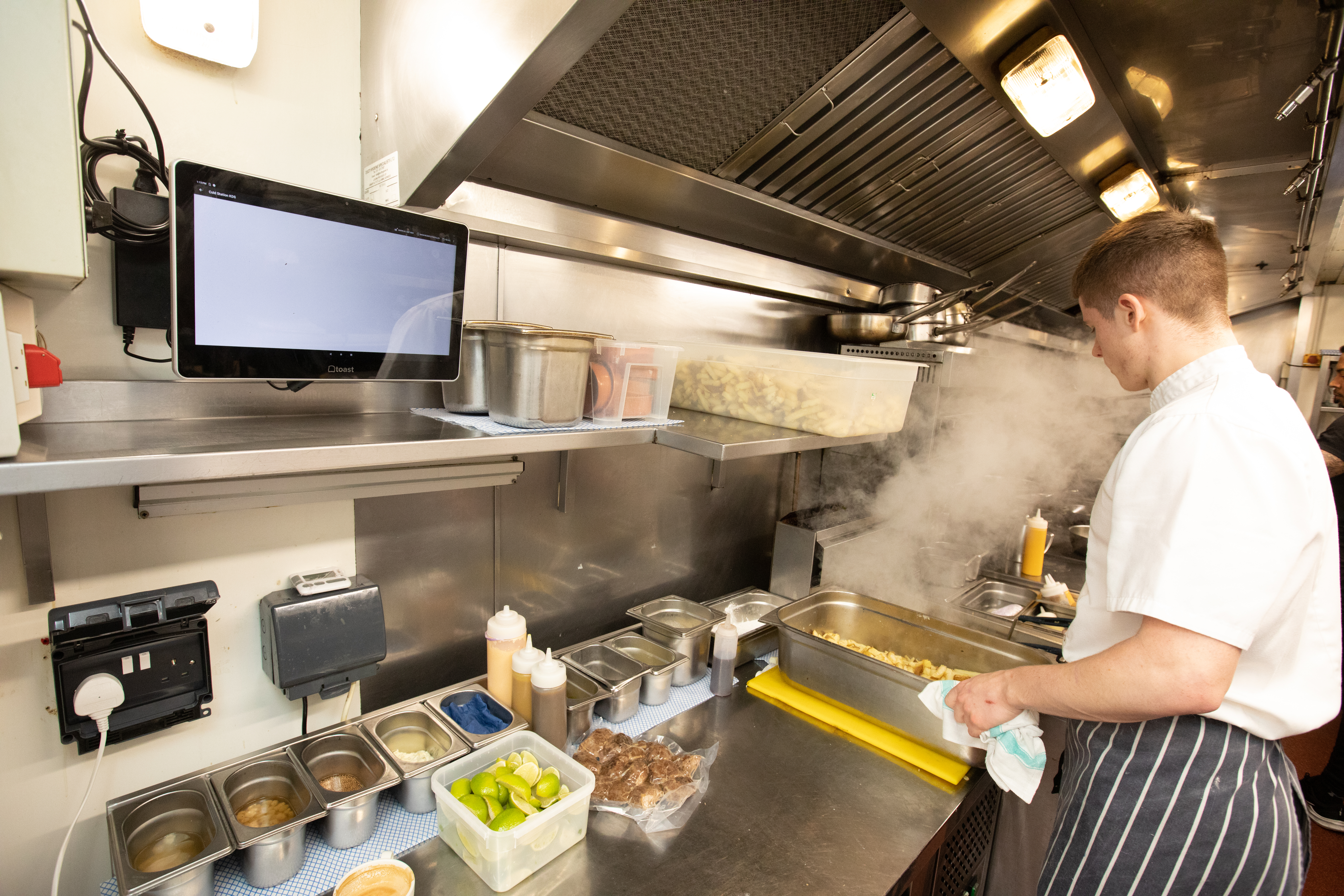How Automation Is Powering the Future of Hardware Testing at Toast

 Joshua Spielman
Joshua SpielmanAs Toast hardware continues to evolve, so do the ways we test it. The goal has always been the same: deliver reliable products that meet the demands of a fast-paced restaurant environment. But as our hardware portfolio grows, manual testing alone can’t keep up with the volume, complexity, and precision we need.
Enter automation.
At Toast, we’ve invested in a growing suite of automated testing tools that allow us to test more devices more efficiently than ever before. From mechanical stress testing to real-time defect detection on the manufacturing line, automation is helping us validate faster and more thoroughly—without compromising on quality.
Precision at Scale: Automated Payment Testing
Our handhelds and terminals include payment readers that must perform reliably under constant use. We’ve implemented an in-house automated testing platform that simulates real-world transactions—tapping, swiping, and inserting cards with millisecond-level timing precision. Rather than relying on manual swipes and subjective observations, this platform enables 1) Consistent test cycles across dozens of hardware products, 2) Precise logging of success/failure states for each transaction and 3) Automated regression testing as software and firmware evolve.
Beyond isolated component testing, we use this platform to run full system-level tests that replicate customer environments in a compressed timeframe. Devices are tested in real configurations—paired with printers, running real workloads—to catch software bugs, communication issues, and mechanical failures before they ever reach a restaurant. This approach helps us to validate complex interactions under real-world stresses, ensuring that every element of the system works reliably together.
The result? Fast test cycles and coverage across full system configurations — and more confidence in what we ship.
Repeatability You Can Trust: Mechanical Cycling with Robotic Arms
For mechanical components – think buttons, hinges, or even screen pressure – we’ve integrated a precision testing system that applies highly controlled force and displacement. Instead of tasking someone to press a hinge 20,000 times (yes, we used to do that), we now use a compact robotic arm to simulate high-cycle mechanical use cases with minimal supervision.
These arms can run 24/7, executing programmable test routines that replicate years of wear in just days — all while capturing detailed data at every cycle. They’ve become essential for answering critical durability questions, such as:
How much force is too much when pressing a button?
When do mechanical parts start to degrade or deform?
How can we compare two design revisions in a meaningful, data-driven way?
This level of automation allows our team to iterate faster, reduce variability, and make durability decisions grounded in data—not guesswork.
Intelligence on the Manufacturing Line
On the factory floor, catching defects early is everything. That’s why we’ve integrated an AI-based inspection system that analyzes images of each unit during assembly — spotting issues like misaligned parts, cosmetic blemishes, or misplaced components, often before a human eye would catch them.
Operating in real time, the system flags outliers, enabling our manufacturing teams to:
Reduce rework costs
Identify systemic issues earlier in the process
Improve engineering efficiency on the manufacturing line
It’s like having an extra set of highly trained, lightning-fast eyes on every unit we build.
Looking Ahead
Automated testing isn’t just a time-saver—it’s a quality enabler. It helps us to validate features, push hardware harder, and learn faster from the results. Most importantly, it frees our engineers to focus on what matters: solving hard problems and helping improve the restaurant experience.
At Toast, automation is helping us scale our hardware testing with confidence—and this is only the beginning.
____________________________
This content is for informational purposes only and not as a binding commitment. Please do not rely on this information in making any purchasing or investment decisions. The development, release and timing of any products, features or functionality remain at the sole discretion of Toast, and are subject to change. Toast assumes no obligation to update any forward-looking statements contained in this document as a result of new information, future events or otherwise. Because roadmap items can change at any time, make your purchasing decisions based on currently available goods, services, and technology. Toast does not warrant the accuracy or completeness of any information, text, graphics, links, or other items contained within this content. Toast does not guarantee you will achieve any specific results if you follow any advice herein. It may be advisable for you to consult with a professional such as a lawyer, accountant, or business advisor for advice specific to your situation.


